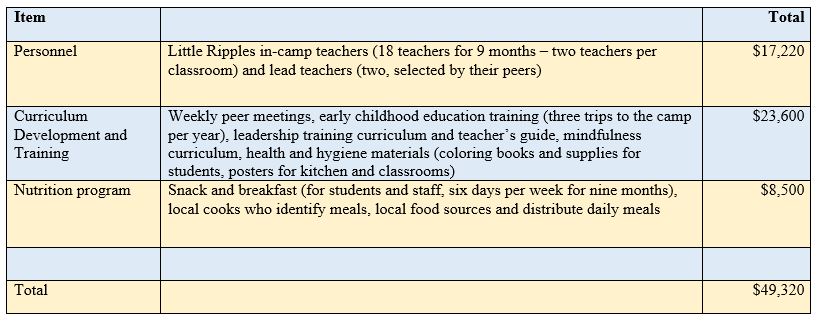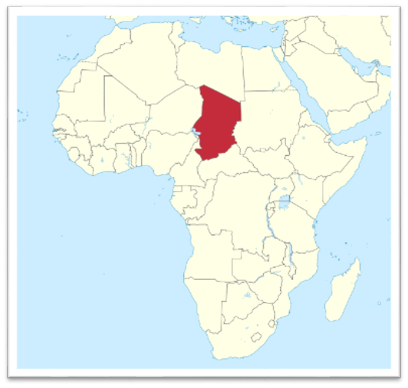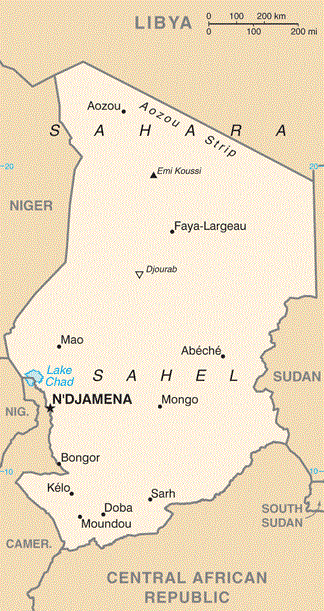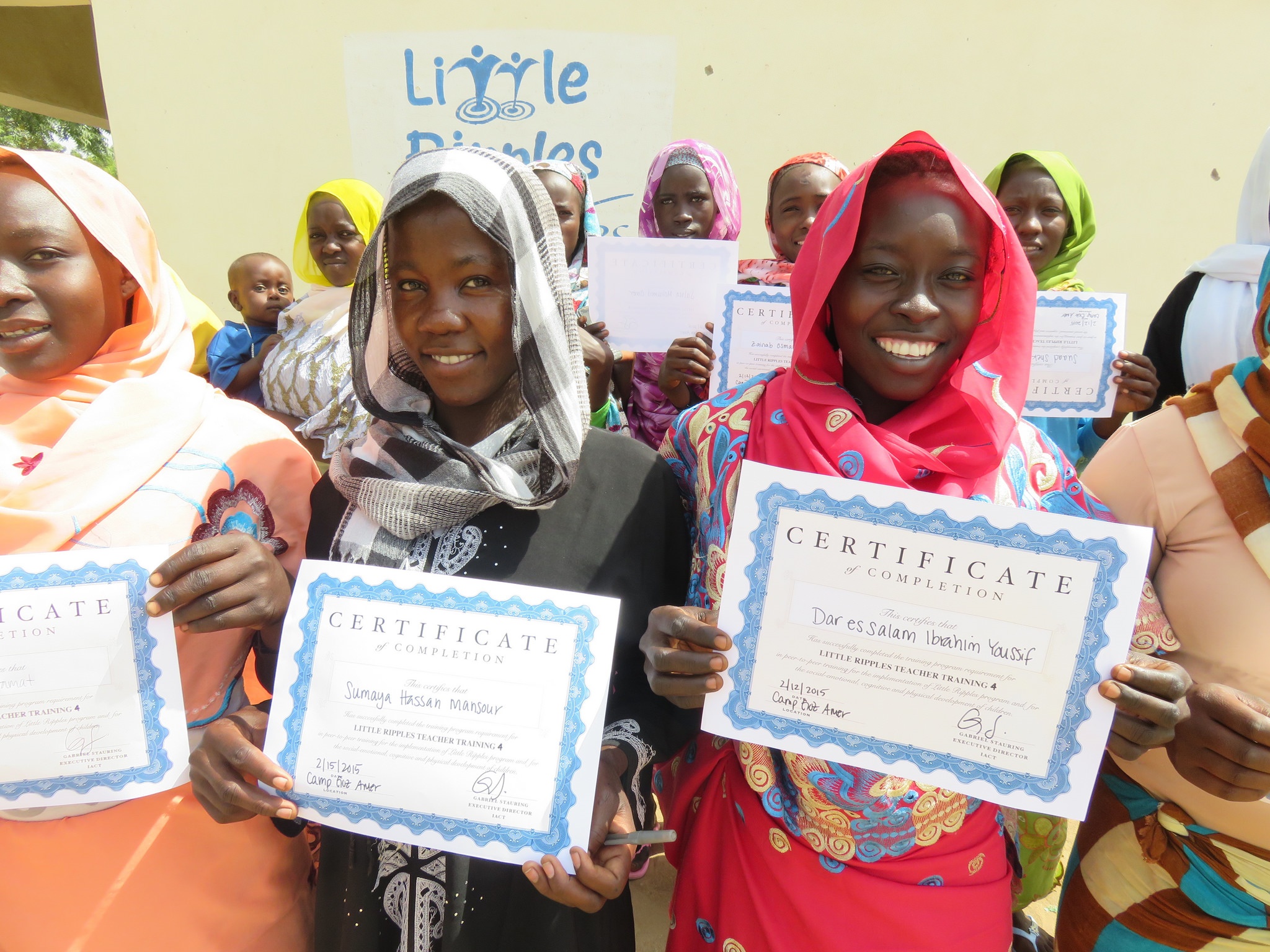
Mission
iACT provides humanitarian action to aid, empower and extend hope to those affected by mass atrocities, creating a world where people are connected and equipped to act.
Life Challenges of the Women Served
Following years of civil war in Sudan, South Sudan gained independence from Sudan in 2011, but armed conflict has continued in the region. Chad is home to the largest population of Sudanese refugees, with over 250,000 people living in camps. Many refugees in Chad have been there for more than a decade. Darfur, the western region of Sudan bordering Chad, was the subject of brutal assaults in the civil war, beginning in 2003. The violence killed hundreds of thousands of Darfuri and was so extreme, it was deemed to be genocide by the United Nations. Darfuri women and girl refugees in eastern Chad have fled government-backed violence since fighting began. Prior to enduring rape, attacks and loss of family members, these women were farmers living in small villages. Humanitarian aid has shrunk and forced drastic cuts in services, including food rations and employment opportunities. Chad itself ranks 184th out of 187 countries in the UN’s Human Development Index. The Darfuri refugee population lives in a state of prolonged human destabilization, overcrowded camps, deprivation and uncertainty over the future.
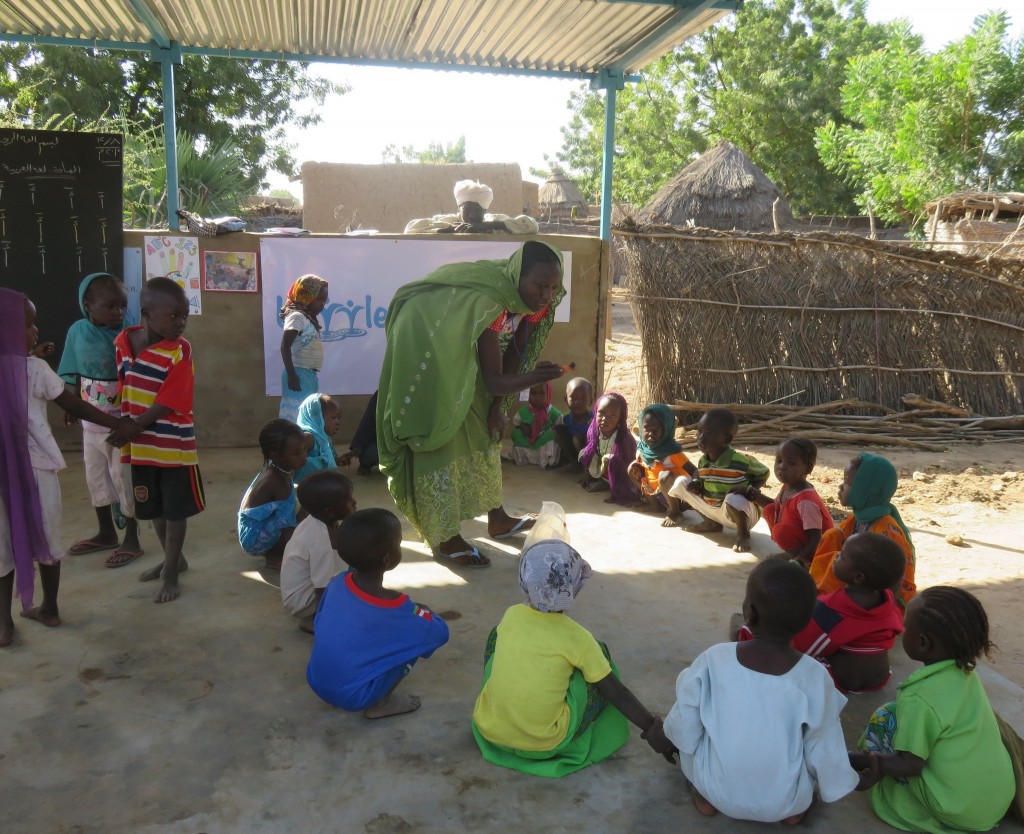 Despite the fact that 85 percent of the camps are women and children under 18, refugee women and girls have no choice, opportunity or hope beyond the confines of their gender-defined roles. Most of their daily lives are dictated by their fathers, husbands or men who hold leadership positions. It is common for refugee girls to be married as early as age 10 or 12. Fathers and husbands often deny their wives and daughters education and employment, demanding instead that they stay home to tend to household needs. Seventy-seven percent of refugee women cannot list any of their human rights. The reasons why these women have no voice are varied, but often include traditional social habits, economic status and loss of control over their daily lives.
Despite the fact that 85 percent of the camps are women and children under 18, refugee women and girls have no choice, opportunity or hope beyond the confines of their gender-defined roles. Most of their daily lives are dictated by their fathers, husbands or men who hold leadership positions. It is common for refugee girls to be married as early as age 10 or 12. Fathers and husbands often deny their wives and daughters education and employment, demanding instead that they stay home to tend to household needs. Seventy-seven percent of refugee women cannot list any of their human rights. The reasons why these women have no voice are varied, but often include traditional social habits, economic status and loss of control over their daily lives.
In the Goz Amer camp, women and girls make up more than 50 percent of the population, yet men hold the vast majority of formal employment and leadership positions. Of the 119 primary and secondary school teachers, only 17 are women. Even when women do attain positions of leadership, it does not ensure equal access to resources or equal participation in decision making.
The Project
iACT provides an early childhood education program called Little Ripples, which is tailored to those exposed to severe trauma. The program trains and employs refugee women to provide play-based, peacebuilding and culturally inspired preschool education to young refugees. iACT aims to enhance this training in order to give these educators leadership skills and a stronger voice for school resources and camp management.
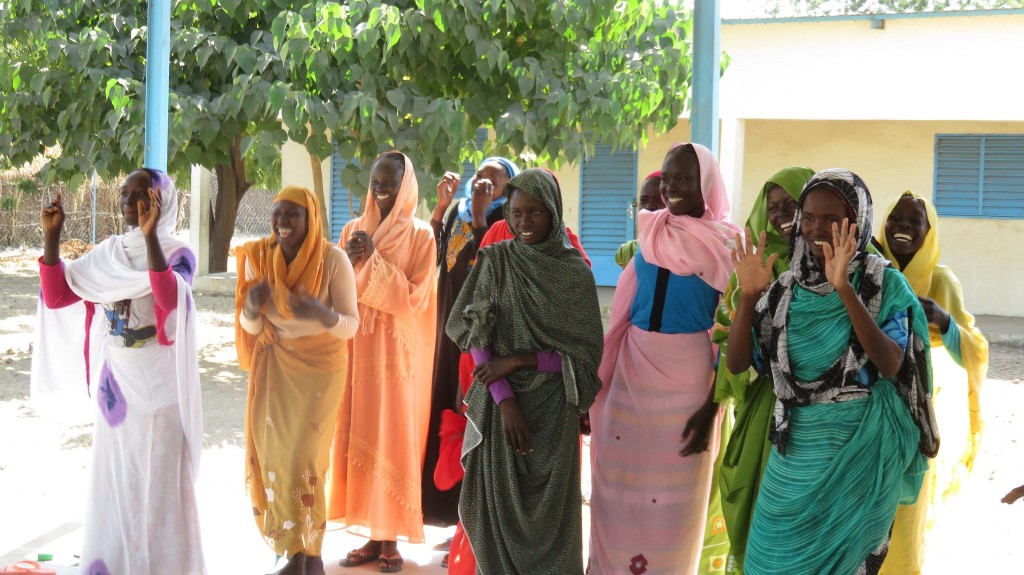 To achieve this goal, iACT will revise its Implementation Plan for leadership training and broaden its curriculum to include leadership, gender-equality, human rights, conflict resolution, mindfulness and goal-setting. It will also develop a Facilitation Guide to train two education directors in guiding women through the curriculum. All materials, for both adults and children, will be translated into Darfuri Arabic. After one year, iACT will document and share their findings based on observations and evaluation, and this will be compiled in one Leadership Curriculum and Facilitation Guide.
To achieve this goal, iACT will revise its Implementation Plan for leadership training and broaden its curriculum to include leadership, gender-equality, human rights, conflict resolution, mindfulness and goal-setting. It will also develop a Facilitation Guide to train two education directors in guiding women through the curriculum. All materials, for both adults and children, will be translated into Darfuri Arabic. After one year, iACT will document and share their findings based on observations and evaluation, and this will be compiled in one Leadership Curriculum and Facilitation Guide.
The goal is for 62 women to participate in leadership training, increase their knowledge and leadership skills, and become active participants in education management and meetings. The Leadership Training will guide women in a peer-to-peer participatory curriculum where they will define leadership, outline positive leadership qualities, reflect on their own leadership strengths and weaknesses, and develop steps to becoming better leaders in their camp. The women selected to participate in the project will be those who have already been recruited, trained and employed to serve as Little Ripples program teachers, as well as existing preschool teachers of another program in the camp.
The project will take place over three trips in 2016 and 2017 in the Goz Amer refugee camp. The first trip will include in-depth training of two Education Directors on the Facilitation Guide and Curriculum, a baseline assessment addressing project objectives, observations of the initial implementation of the Leadership Training, and informational meetings with camp members to raise awareness of the project. The next two trips will consist of monitoring and evaluation, and further training of the two Education Directors. Each step of the project will be measured and evaluated to assure progress has been made.
Number of women and girls served:
- Direct – 62 (21 Little Ripples employed early childhood educators and 41 prospective early childhood educators)
- Indirect – 775+ (Approximately 240 female students [45 percent of 535 total students], approximately 535 female caregivers and 3 Pond refugee host families)
Sustainable Development Goals
Questions for Discussion
1. How do you think increasing leadership qualities in refugee teachers will affect their students in the future?
2. How will the refugee camps change when women have a stronger voice in decision making?
3. How can education help refugees overcome the atrocities they have endured?
How the Grant Will be Used
DFW’s donation of $49,320 over one year will cover salaries, curriculum development and leadership training for 62 women, and nutrition at the Little Ripples schools in Goz Amer. This includes:
- Personnel: 18 teachers for nine months (two per classroom), two lead teachers.
- Curriculum development and training: weekly peer meetings led by lead teachers, early childhood education training, printing (leadership training book, peer education materials and training materials), mindfulness curriculum development as part of leadership curriculum, health and hygiene materials, translation of leadership curriculum, teacher guide and mindfulness curriculum.
- Nutrition program: snack and breakfast at Goz Amer Little Ripples School for students and staff six days per week, local cooks to locate sources and distribute meals.
Why We Love This Project/Organization
We love this project’s focus on forgotten Darfuri refugees, the emphasis on strong early childhood education, the inclusion of refugee women in the programming and the focus on schools in refugee camps.
Evidence of Success
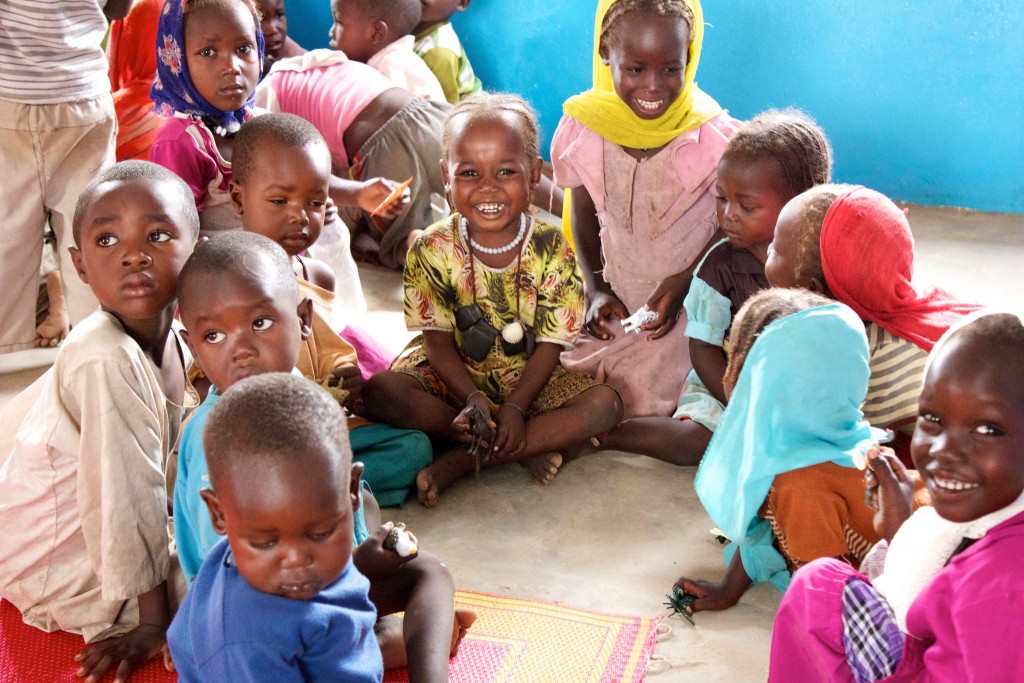 Based on baseline and one-year follow-up assessments, Little Ripples has shown to improve the social-emotional, cognitive and health behavior of children. Mothers note big changes in their children, who are more talkative and engaged. The young students have also learned about basic hygiene, and mothers notice that their children wash their hands after using the bathroom and are generally more interested in cleanliness. In the classroom, the children are focused and happy, and enjoy interacting with one other.
Based on baseline and one-year follow-up assessments, Little Ripples has shown to improve the social-emotional, cognitive and health behavior of children. Mothers note big changes in their children, who are more talkative and engaged. The young students have also learned about basic hygiene, and mothers notice that their children wash their hands after using the bathroom and are generally more interested in cleanliness. In the classroom, the children are focused and happy, and enjoy interacting with one other.
Beyond the children attending Little Ripples, the program’s impact ripples out to the 8,946 slightly older siblings who no longer have to miss out on their own education to tend to the young ones. Parents are able to focus on securing resources and income to provide for their family. The ripples spread further still to primary students and teachers, as the students gain a foundation of language and interpersonal skills.
Voices of the Girls
“Before we came to the camp, we did not know women have rights. We did not know children have rights and a voice.”
iACT Refugee Camp Coordinator Oumda Tarbosh
“With my Little Ripples salary, I can make more decisions myself. I can decide what I do with my salary.”
Samiya, teacher, age 19
“I have a job to go to everyday. I feel I have a responsibility. I feel happy when I walk into the classroom and I hear the children call me teacher and they sing a welcome song.”
Soumiya, teacher, age 21 (Sumiya has been in a refugee camp Goz Amer for 13 years. With her Little Ripples salary, she supports five other people in her household.)
“It makes me happy to work at Little Ripples because I no longer have to walk to the valley to farm anymore.”
Zainab, Little Ripples School Lead Teacher
Mariyam, a mother, said she has seen a big change in her daughter. Since attending Little Ripples, her mother reports that, “she counts more and sings songs and poems at home.” Also, at Little Ripples, she has learned about hand washing. “After she goes to the bathroom, she cleans her hands. She likes to be more clean now.”
“What makes me feel most happy is being able to teach children in my community and receive a salary.”
Mariam Ali Issa, teacher, age 18
About the Organization
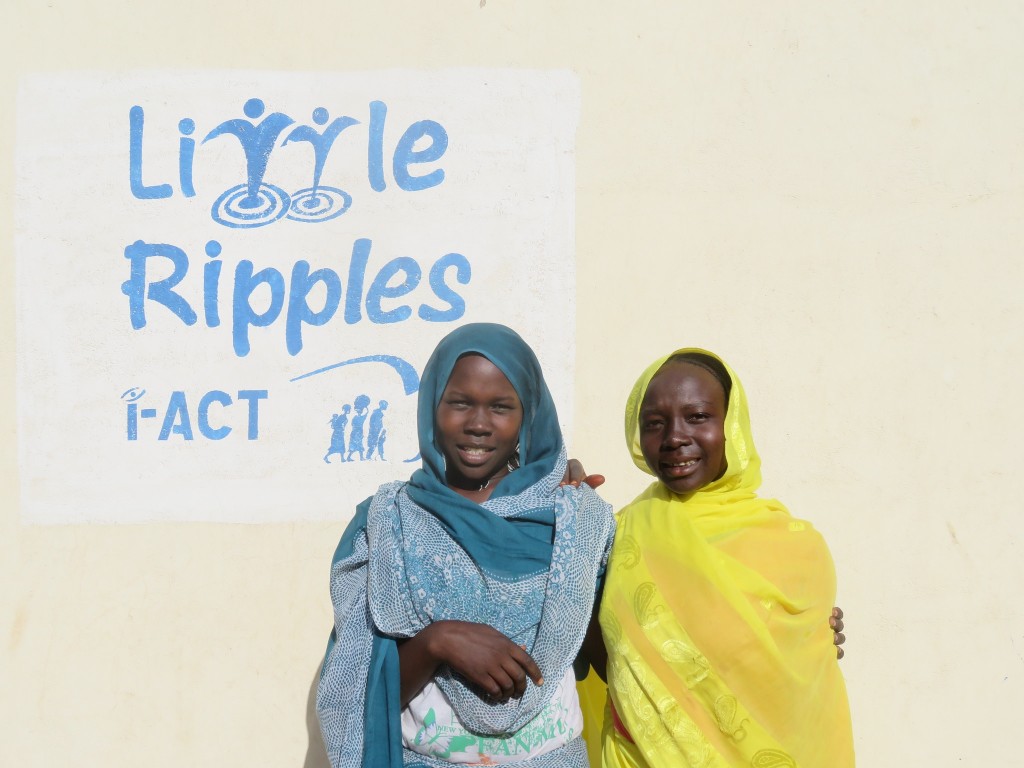 iACT assists refugees through activism and projects focused on education and sports. The organization has been visiting the refugee camps in Eastern Chad since 2005, and looks at each expedition as an opportunity for individuals to connect with refugee on a person level. iACT partners with NGOs, universities and teachers to create early childhood education programs in the refugee camps of eastern Chad, and has created a Darfuri all-refugee soccer team and youth academy.
iACT assists refugees through activism and projects focused on education and sports. The organization has been visiting the refugee camps in Eastern Chad since 2005, and looks at each expedition as an opportunity for individuals to connect with refugee on a person level. iACT partners with NGOs, universities and teachers to create early childhood education programs in the refugee camps of eastern Chad, and has created a Darfuri all-refugee soccer team and youth academy.
iACT Founder and Executive Director Gabriel Stauring became involved in the situation in Darfur out of a sense of personal responsibility. He believes the power of community and compassion, combined with personal empowerment, can bring about meaningful change.
Where They Work
iACT serves Darfuri refugees living in the twelve camps in eastern Chad, located along the border with Darfur, Sudan, population 37 million. Sudan is located in northeastern Africa, bordering the Red Sea, between Egypt and Eritrea. It is characterized by hot, dry and arid desert stretched over a flat, featureless plain. A third of the children are underweight and there is a very high incidence of major infectious diseases. One out of five are unemployed.
Conditions in eastern Chad are profoundly inhospitable. It is located in the Sahel, one of the world’s toughest areas in terms of survival. At slightly more than three times the size of California, Chad is home to approximately 12 million people, 45 percent of whom are age 14 or younger. It borders Sudan as well as Cameroon, Central African Republic, Libya, Niger, and Nigeria. Chad is the largest of Africa’s 16 landlocked countries, and experiences hot, dry, dusty winds and periodic droughts and locust plagues. Like Sudan, the incidence of childhood malnutrition is high, as is the chance of contracting a major infectious disease.
A Closer Look at the Darfur Refugees
Approximately the size of Texas, the Sudan’s Darfur region has been called “hell on earth” by a United Nations Secretary General. Since 2003, the Sudan Liberation Movement (SLM) and Justice and Equality Movement (JEM) rebels have been fighting the Sudanese government militia, which is responsible for ethnic cleansing campaigns inflicted on non-Arabs. This has led to the horrific deaths of 300,000 – 500,000 people due to violence, starvation and disease. Over 370,000 live as refugees in twelve Darfuri refugee camps in eastern Chad. Most come from three tribes: the Fur, Masalit, and Zaghawa. There are more than a dozen other smaller tribes represented in the camps.
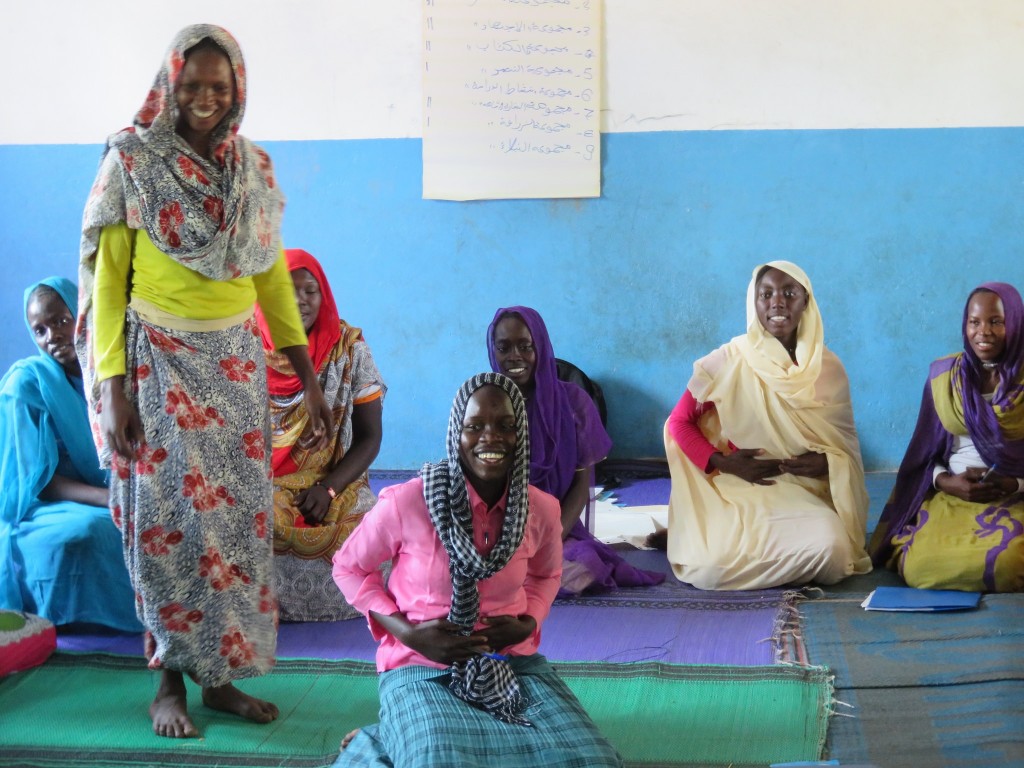 Refugees often flee in the middle of the night, leaving their possessions behind and walking days and weeks across horribly unforgiving terrain. They are dependent on international aid for food, water and shelter. Every refugee camp has a medical center, schools and a market to buy or sell clothes, vegetables and goat meat. World Food Program distributes flour, vegetable oil, cereal grains, sugar and salt to women every month. Each family lives in a tent with an open fireplace for cooking and a storage area for firewood. Tensions have grown between the refugees and the local villagers, because resources – in particular food, water, firewood and straw – are in less supply as refugees continue to arrive. Refugees are vulnerable to gender-based violence, sexual harassment, prostitution and early marriage.
Refugees often flee in the middle of the night, leaving their possessions behind and walking days and weeks across horribly unforgiving terrain. They are dependent on international aid for food, water and shelter. Every refugee camp has a medical center, schools and a market to buy or sell clothes, vegetables and goat meat. World Food Program distributes flour, vegetable oil, cereal grains, sugar and salt to women every month. Each family lives in a tent with an open fireplace for cooking and a storage area for firewood. Tensions have grown between the refugees and the local villagers, because resources – in particular food, water, firewood and straw – are in less supply as refugees continue to arrive. Refugees are vulnerable to gender-based violence, sexual harassment, prostitution and early marriage.
The Sudanese government has kept complete control of the Darfur region, which makes assessment of the violence challenging. The UN has quit updating its Darfur death tolls and even experts on the conflict cannot provide accurate estimates. Sadly, Darfuris are living through a largely forgotten war, despite wave after wave of violence continuing to wash over them.
Learn more about Sub-Saharan Africa and the Sustainable Development Goals.
Learn more about refugees here and here.
Source Materials
http://www.iactivism.org/learn/
http://www.redcross.int/EN/mag/magazine2005_2/22-23.html
CIA World Factbook

